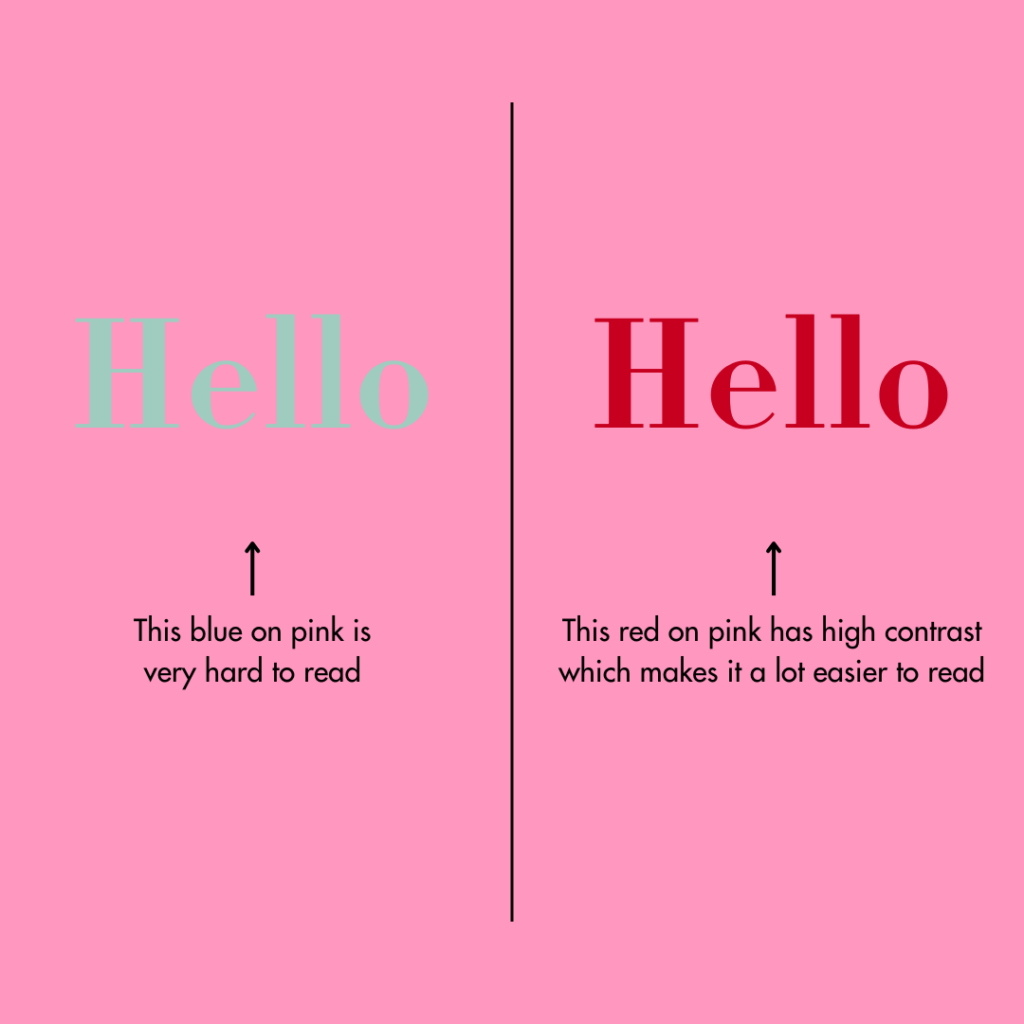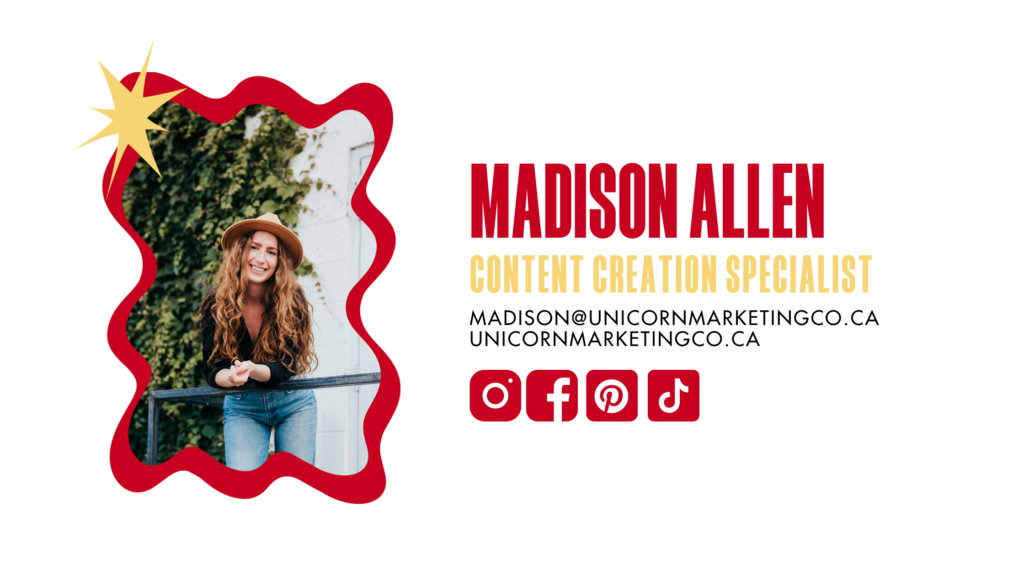We are all used to hearing the term accessibility. This usually comes in the form of wheelchair ramps, parking, elevators, or bathroom stalls. One aspect of life that’s not normally associated with accessibility is the online landscape – specifically digital marketing.

Accessibility in Marketing
Before we dive in, we want to state that we are not experts on this topic. This is a relatively new term that has surfaced in the last couple of years, and we are sharing what we have learned so far. New information is always coming in, and we hope to keep you informed of the latest information. Let’s get down to business!
What is Accessibility in Marketing?
It is defined as “the use of inclusive design practices that make it possible for users of all abilities to fully experience the brand, receive and understand communication, and take advantage of opportunities to engage with and become fans of the brand, services, or products.” – Simplilearn.
Simply put, it is ensuring your designs can be enjoyed by everyone!
Why is Accessibility in Marketing Important?
Of course, we all understand that it is important for every single person to have the ability to access the same experiences and content. Let’s go one step further with a marketing point of view and look at the importance of accessibility through a business lens.
From a marketer’s perspective, the why is very simple. You want everyone to be able to access and understand your company, brand, services, and products.
For example, if you have an e-commerce website that is not optimized for mobile, you will not make any sales because users cannot access your content properly. “At least 79% of smartphone users have made a purchase online using their mobile device in the last 6 months” according to US data in 2023. That means that you would be missing out on the potential for A LOT of sales.
Let’s look at another example. Maybe you design packaging in a rebrand but the colours chosen do not have enough contrast. Your branding is now flat, not easily identifiable, and does not stand out in a store. As a result, people look over your products, do not make a purchase, and you do not gain any brand loyalty.
These scenarios are not ideal for businesses. Thankfully, proper accessibility in your marketing efforts can help ease these problems and in turn, they can get you even more business.
Not Everyone Receives Information the Same Way
People receive information in many different ways. Have you ever done the VARK test that lets you know if you prefer receiving information through audio, visual, reading/writing, or kinesthetic? It’s a fun way to see how you absorb information the best. We recommend taking the test!
Since there’s a mix of ways that people can learn, it is important that your marketing touches aspects of each of these when possible. There are also some types of disabilities that can be affected by design. In terms of digital marketing, sight and hearing are the two most common disabilities to be aware of when creating designs.
Many small practices make a big impact whether you are writing blog posts, designing social media content, editing a website, or rebranding a company. All the little ways that you can be accessible will not only lead to better sales, but to a better brand that is inclusive to all and builds important brand loyalty for the right reasons.
Different Ways to Be Accessible in Your Marketing
Here are some ways that you can ensure your website, content, and other media are accessible:
1. Hyperlinks
When adding a hyperlink to your content, add the link to meaningful text when possible. For example, instead of adding a link to the phrase “click here” add it to a clear call to action such as “download the free workbook”
2. Contrast
This is a fairly obvious one when it comes to design, but even seasoned designers sometimes need a reminder! It is hard to read information when there is not the right amount of contrast, just look at the example in the photo above. Additionally, it has come out recently that black and white can be too contrasted, so it is best to opt for grey or off-white instead.

3. Simple Language
Being completely accessible includes using language that is simple and easy to understand. If you throw jargon and unclear words around in your copy, your customers will be confused and not buy from you.
4. Audio Paired with Visual
Whenever you post a video, we recommend including audio and writing whenever possible. This way, it is available to people in three different formats. Having subtitles, closed captions, and descriptions are all ways to make videos more accessible. Whether they have a disability, learning preference, or simply do not watch videos with their volume on, you can still capture all of these people.
5. Alt Text
It is important to use alt text so that screen readers can describe images. Learn more about alt text on our blog!
6. Titles, Headings, and Page Numbers
Insert clear titles and descriptive headings whenever possible to provide structured information that is easily skimmable. When applicable, it is also important to use page numbers in your content.
7. Lists
Lists are generally encouraged for a lot of media so that you can get information across in an easily digestible format. Numbered or bulleted lists help make content skimmable and accessible.
8. Transcripts
If you have audio-only content such as a podcast, having show notes available helps increase accessibility.
9. Emojis
There are a few reasons to use emjois sparingly. For starters, sometimes the meaning of emojis are ambiguous or mean different things to different people and cultures. Secondly, they do not make much sense when read out loud by a screen reader. If you want to use emojis in your content, it is recommended to use them at the end of a caption.
10. Hashtags
Try using title case in your hashtags so that it is clear what you are trying to say. Do you remember when the hashtag #nowthatcherisdead trended? What do you think that says? because it was supposed to be #NowThatcherIsDead but was read as #NowThatCherIsDead. Very different! Additionally, if a person is using a screen reader, it will likely pick up what the hashtag means instead of saying one long jumbled word. The best practice is using hashtags at the end of your content.
11. Embedding Videos
Embedding videos can sometimes change the accessibility, so make sure you always double-check the video and that it plays properly.
12. Brand Fonts
Choose your brand fonts wisely. If you have a script font or one that can be hard to read, ensure it is used sparingly and not for any important content. Instead, use it more for secondary information.
Listen to a Podcast on Accessibility in Marketing
In this episode of the Magic Hour Podcast, our Founder Hope talks to Chloe Arielle. Chloe is a designer who cultivates design solutions that are accessible for socially conscious companies. She has dove deep into the digital accessibility field and shares everything she has learned about ensuring the designs you create are available to all. Listen to the podcast episode to explore what accessibility in design truly means and how it should be a foundational layer in marketing, branding, and design.
Digital Marketing Accessibility Resources
There are so many incredible resources that Chloe mentioned and that you can find online. Here are a few of them:
- Colour Contrasting Sites Web AIM and Pika (IOS only): Make sure your designs are accessible by using this site to test the contrast.
- Accessibility in Design Web Accessibility Initiative and Deque University: Learn everything about accessibility so that you can become a master in your designs.
- Design Learning The Futur (free YouTube videos): Learn the best design strategies so you can design amazing content the right way.
Thanks for Reading!
Since the digital marketing accessibility landscape is constantly changing and evolving, we will continually update this blog post with new information. Save this post for future use!
Do you have any accessibility tips or resources that you would like to share? Let us know!
Check out our Magic Hour Podcast where our Founder asks imaginative, light-hearted questions to her incredibly talented guests from here, there, and everywhere! Listen to Season 2 of Magic Hour which is out now!
Connect with us on Instagram and check out our other blog posts.


